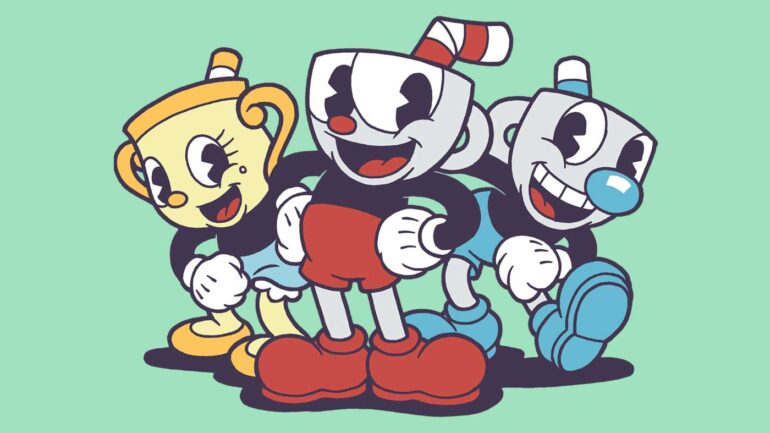Although it rocketed into the mainstream upon its release thanks to an irresistible handcrafted art style and bombastic big band sounds, Cuphead was far from an overnight success. It took the grit and determination of its dedicated team, who themselves took considerable risk to push the game out, while the supportive efforts of ID@Xbox helped get eyeballs on the game and transform it into the transmedia brand it has become.
In fact, I first discovered my love for the title while learning plenty about it when I first spoke with StudioMDHR’s Maja Moldenhauer six years ago in Germany, before the game had even launched.
Since then, the game has sold like hotcakes, releasing on most other platforms after debuting exclusively for Xbox. Cuphead himself was then summoned to the big leagues to stir up trouble in Smash, he had his mug featured in an Arby’s kids meal, and he starred in a couple of seasons of his own Netflix series. As the game rounds the bend on its sixth anniversary celebration, the team have put together a special update that celebrates the game’s development and history.
Oftentimes, before you can look forward to the future you must look back to the past, and poring over old art and behind-the-scenes footage certainly helped the Moldenhauers, Maja and Chad, do this.
It was ten years ago that Cuphead was announced, meaning that it’s been a part of gamer’s lives, in one way or another, for a decade.
Maja Moldenhauer: When you put it that way, it feels impossible to comprehend. These characters have become like little animated members of our family, and it’s safe to say we could never have imagined being where we are now all that time ago. We’re so unbelievably thankful to have found such a passionate community who embraced the game the way they did – and it really all started with our Xbox community!
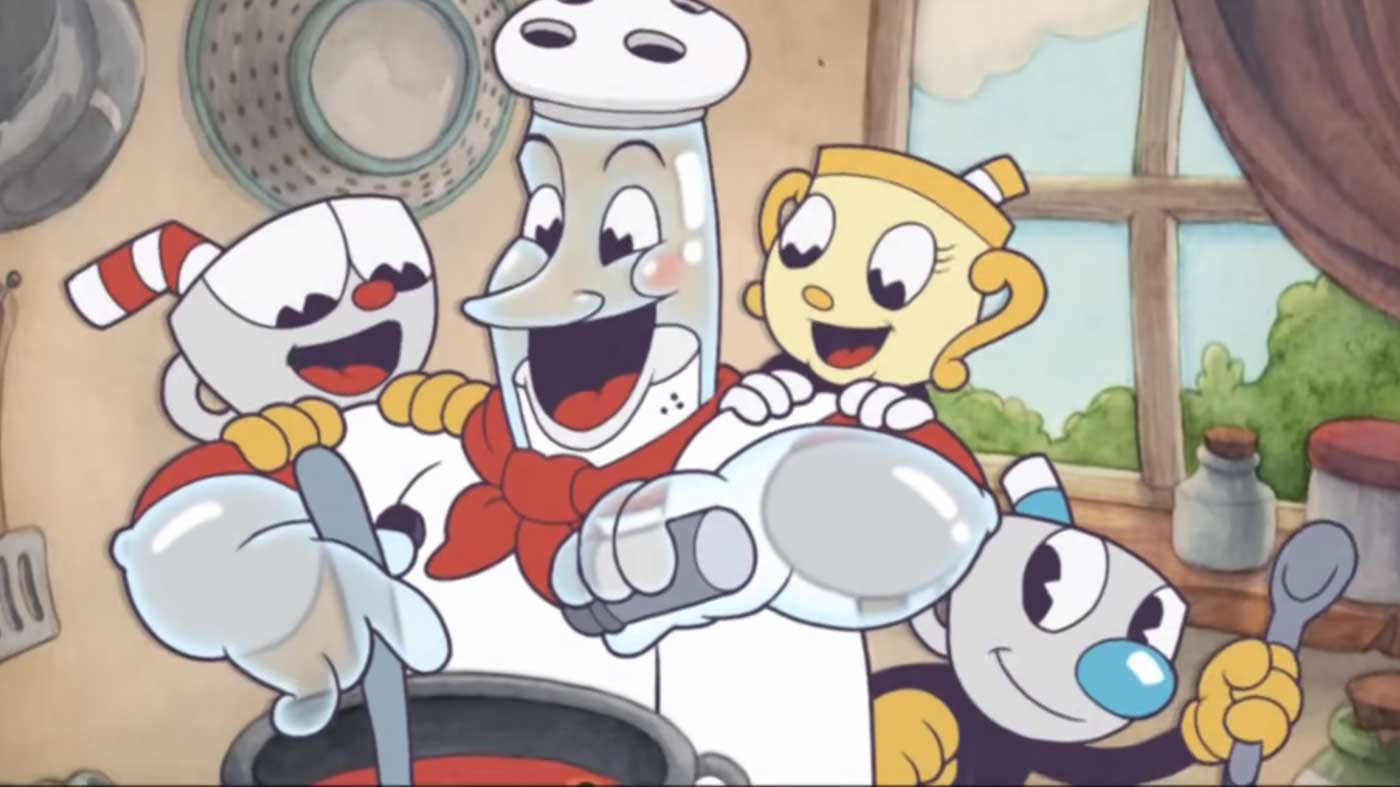
Before settling on our cup-headed hero, inspired by 1936 Japanese propaganda, were there any other curious prototypes that ended up on the cutting room floor?
Chad Moldenhauer: Almost too many to count! We’ve mentioned before that we went through over 300 possible character silhouettes before landing on the idea of protagonists with cups for heads. The goal was to find something iconic and instantly readable in silhouette, like the iconic cartoon characters of the 1930s. On our way to Cuphead and Mugman, we took detours to characters that were more humanoid, cartoon animals, and so much more.
Did Delicious Last Course start off as a clever means to repurpose all of the wonderful ideas that you didn’t have time to refine for the base game and simply grow in scope from there?
Maja Moldenhauer: In a sense! We were so blown away by the fan reception to Cuphead, and like so many other developers, we had arrived at launch day with tons of concepts that we didn’t have time to see through! As the dust settled on the game’s initial launch, we found ourselves unable to stop thinking about all these ideas, and imagining what sorts of bosses we might create if we explored some of the references we didn’t have time to include in the original Cuphead. Another huge motivating factor to revisit the Inkwell Isles was to explore the story of Ms. Chalice, who we had always intended to include as a 3rd playable character and a key part of the Cuphead story, but whose own origins we never had time to properly explain in the original adventure.
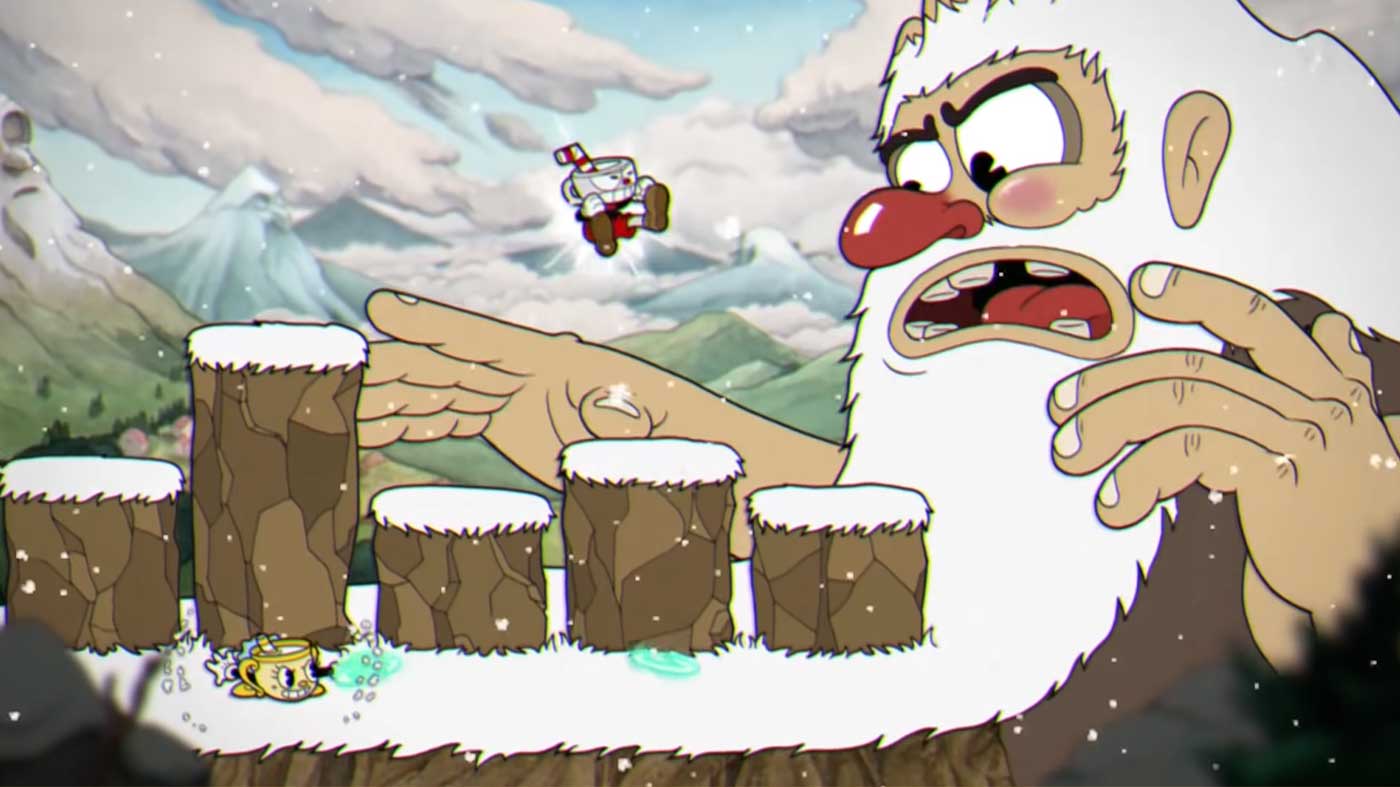
Cuphead gained widespread renown, especially for its crushing difficulty. How’s it feel to be the subject of the constant industry chatter surrounding difficulty in gaming?
Chad Moldenhauer: It might sound odd coming from us, but we never set out to make Cuphead a difficult game for difficulty’s sake. Our goal was always to create something that felt authentically reminiscent of the classic gaming experiences we grew up loving (Contra Hard Corps, Mega Man, Gunstar Heroes, etc.) – which straddled the line between tough and fair. During Cuphead’s development, one of our guiding principles was to avoid patterns and level layouts which created unfair “gotcha” moments for the player, instead designing to encourage that “flow state” where your senses feel like they’re being honed by a challenge!
Although they’re wonderful games, it’s no secret they’re a huge time sink for you as developers. Is the passion there to do another game like Cuphead, or do you see yourselves opting for something a bit simpler in future?
Maja Moldenhauer: When we first created Cuphead, we honestly had no idea whether or not it would resonate with a wide audience. We only knew it felt like something we had to do, because of our love of working with physical materials in traditional styles. Bringing games to life the way we do is really what drives us, and while it’s too early to say where that is going to take us next, we can confidently say that creating handcrafted experiences with authentic tools is something that will always be at the heart of what we do at Studio MDHR.
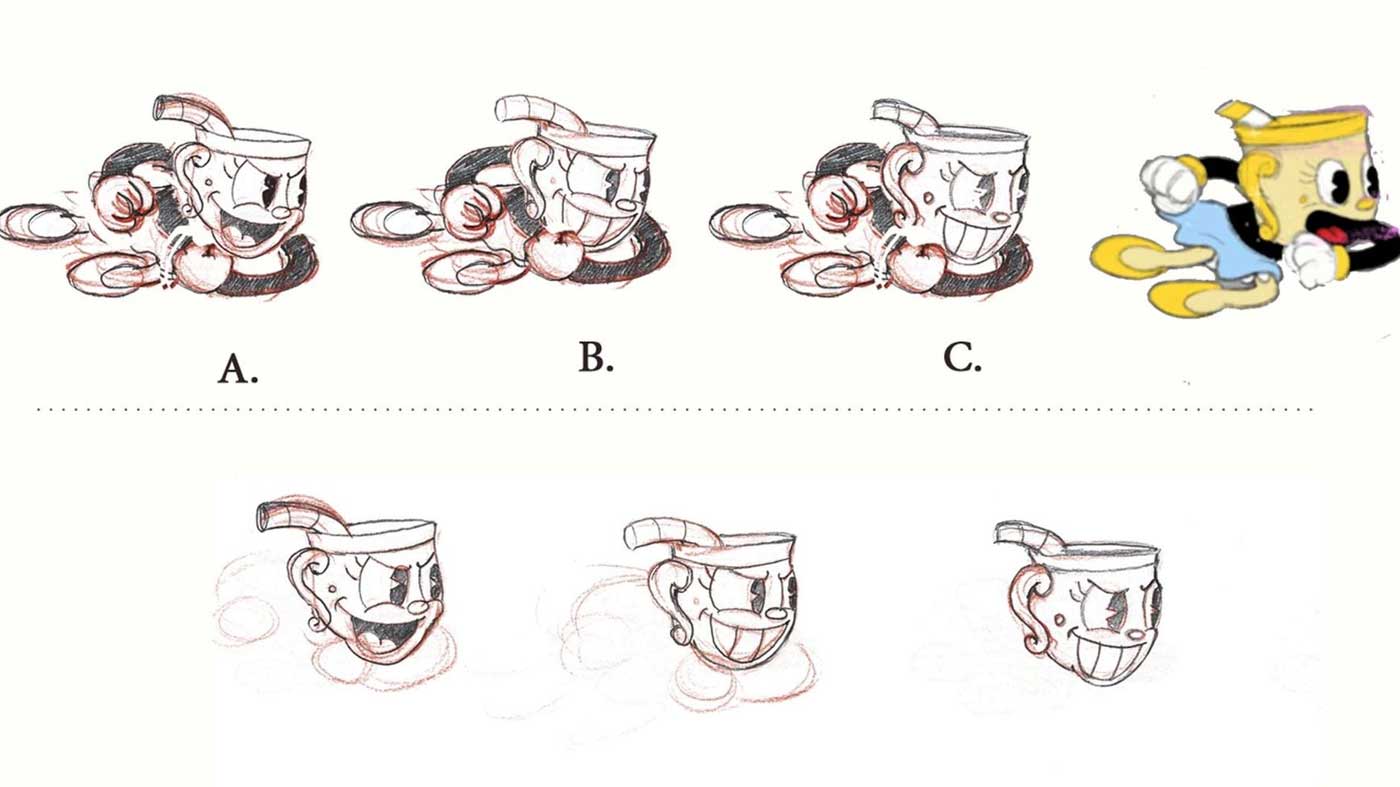
How gratifying is it to see Cuphead receiving such widespread love? I mean, a spot on Smash’s roster, an Arby’s campaign, and an animated series on Netflix seems like a dream run for any creator.
Chad Moldenhauer: “Surreal” doesn’t even begin to describe it! Our wildest dream when we first made Cuphead was to connect with a large enough audience that we could stay together as a team and make our next game. It really feels like one of those situations where our past selves wouldn’t believe us if we went back in time and told them what’s happened since launch six years ago!
Getting a chance to have a small part in a franchise like Super Smash Bros., whose characters are essentially the reason we wanted to make games in the first place, is just unbelievable. And of course, to have a chance to come full circle from our childhood inspiration of vintage cartoons and see Cuphead made into a rubber hose cartoon of its own is beyond words! Seeing young fans connect with the Inkwell Isles first through the Netflix show, before they even know there’s a game, feels impossible. We’re so grateful every day!
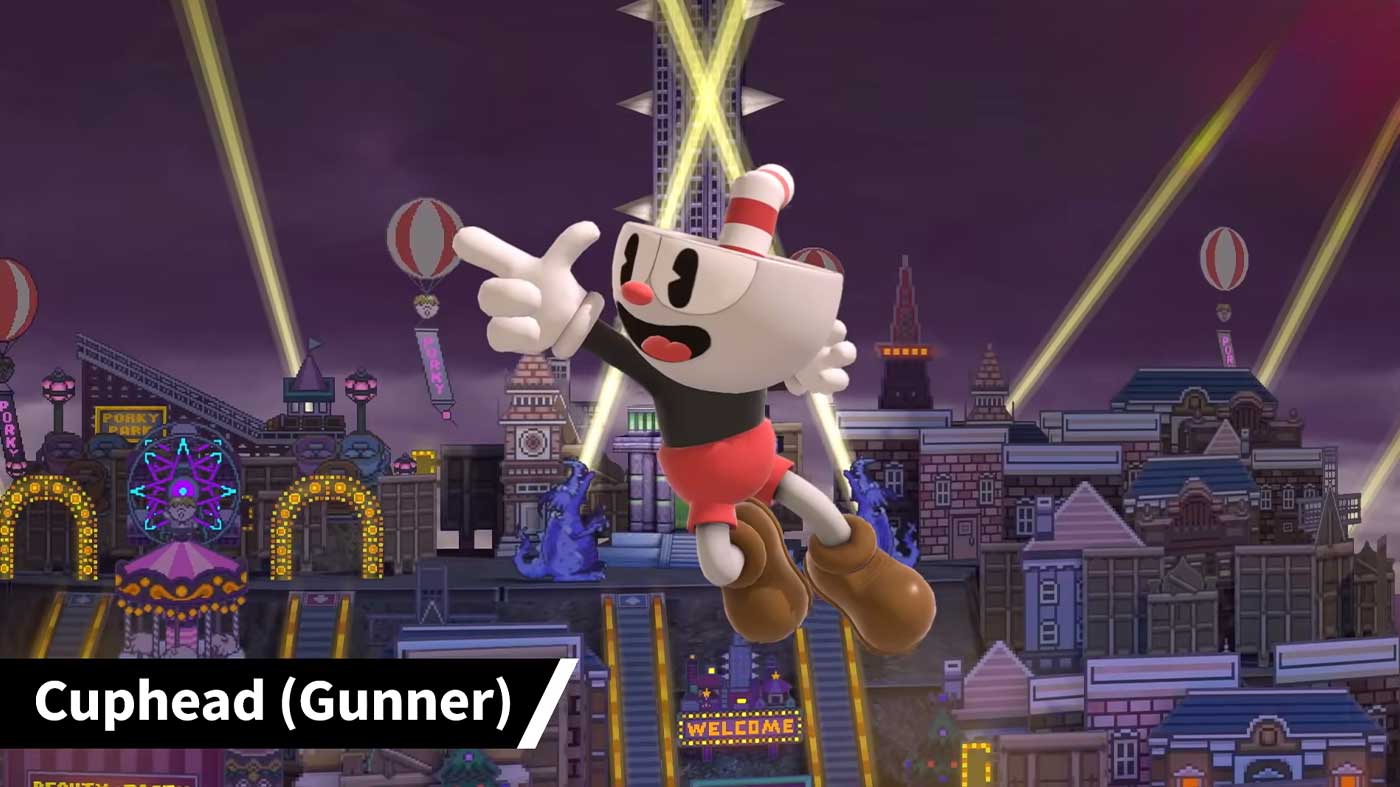
While I’m sure it would have been an honour to win a couple of Keighleys against some fine competition, was it Trudeau’s pat on the back that surprised the team the most?
Maja Moldenhauer: Recognition from a Prime Minister is something we never could have imagined when making Cuphead. With that said, we’re so unbelievably proud to be a Canadian-founded studio, and to be a part of an industry landscape with so many great emerging developers and studios. From Drinkbox in Toronto, to Klei in Vancouver, to Sabotage in Montreal, there are so many great games coming from Canadian teams all the time! We’re just thankful to be a small part of that.
Let’s talk about the anniversary update. I imagine it was nice to reflect and reminisce in compiling old sketches, all of the music, and behind the scenes footage from the game’s development?
Chad Moldenhauer: It really was! In true Studio MDHR fashion, we wanted this update to feel like more than just a series of menu screens. A lot of thought went into subtle touches we could add to make it feel for players like they were really exploring the workspaces of our team, with materials from the game’s production strewn across tables and work desks. Just one fun example of this is the fact that the music player screen contains a real 1930s gramophone we acquired and photographed! As part of putting this all together, we absolutely had a chance to look back and pore over parts of production that even we had forgotten about!
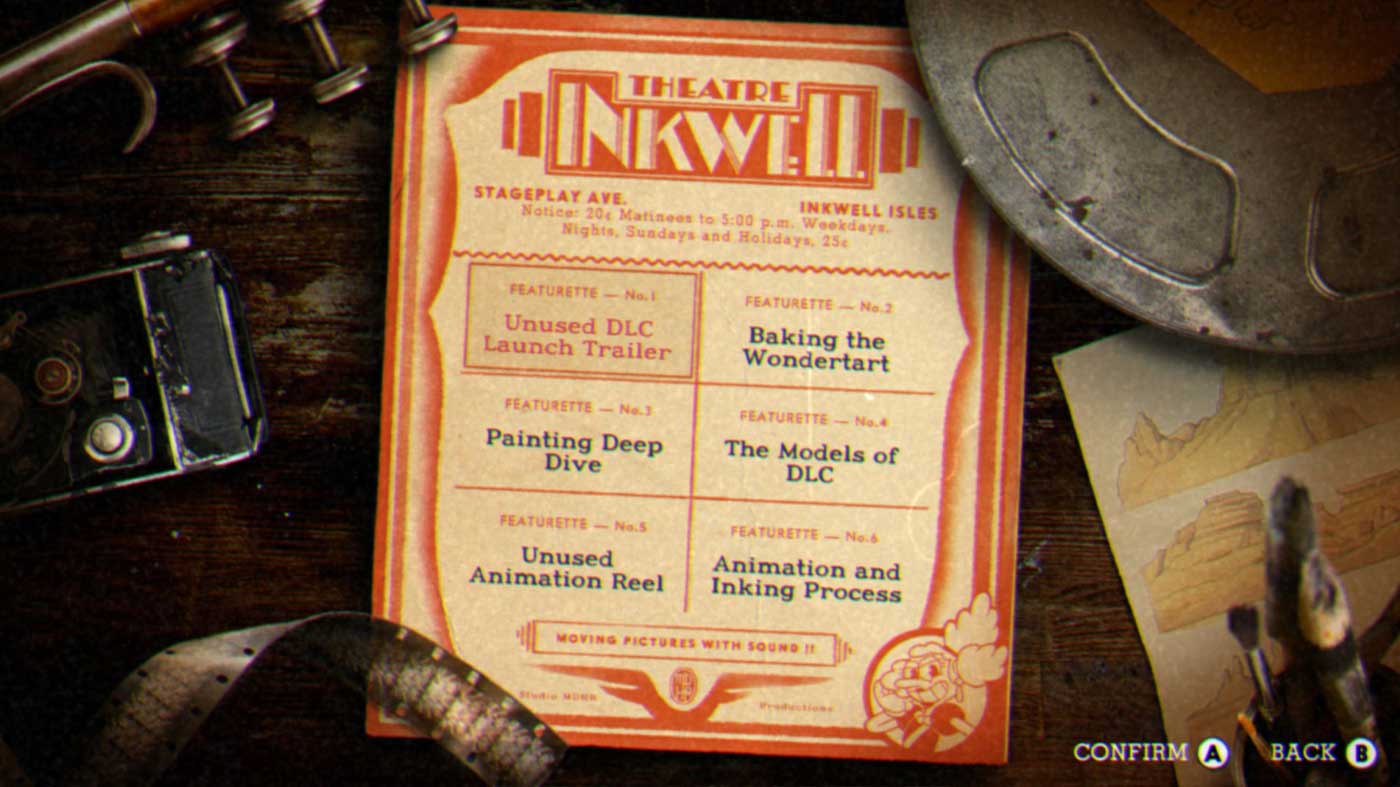
How valuable was the ID@Xbox to the team early on in development and what freedom did it give you to make Cuphead the game you wanted it to be?
Maja Moldenhauer: It’s not a stretch to say that without the ID@Xbox program, Cuphead would not be the game it is, or have become the success it has. From their very first outreach through to today, the ID team has been in our corner all these many years with resources, advice, and support. I’ve said this before, but it bears repeating that I really believe ID@Xbox is the blueprint for how modern developer support can and should be done – a team full of genuine, passionate people who want nothing more than for the teams they work with to make the best games possible.
They were always available with development resources, advice, and guidance as we made our way through the daunting process of releasing our first game to the world. Getting to work with ID@Xbox was like finally finding that all-important map after wandering aimlessly around the dungeon, and we’re so grateful to have been involved with the program!


